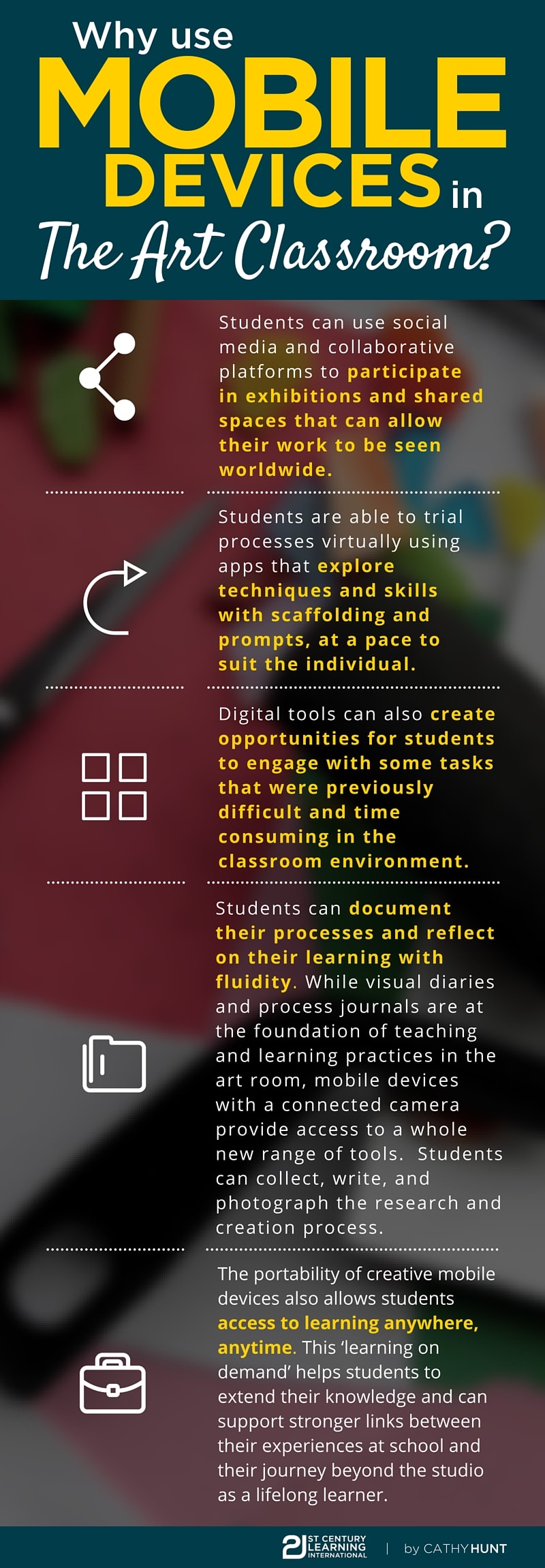Editor’s Note: This post is part two of an earlier post
Creating a Foundation for Learning: Art, Innovation and Technology
The recent discovery of a 42,000 year-old cave paintings in Spain are revolutionizing our view of Neanderthal man. In an age where survival was a daily struggle, these ancient images represent some of the earliest evidence of our innate desire to make art.
Despite the arguments that art is an integral part of our humanity, and the plethora of research that expounds the benefits of an arts-rich education, in general our current educational paradigm does not reflect this importance.
An obsession with data and standardization has resulted in a crowded-curriculum, an emphasis on core-subjects, and a culture where quantifying results often takes precedence over creativity and self-expression.
By combining traditional techniques with digital mediums, students can develop a rich ‘creative tool-box’ and a flexible, experimental and mixed-media approach that aligns with the needs of the 21st Century learner.
Technology in Support of a 21st Century Arts Education
Technology can be used to provide a conduit between art-making experiences and the broader goal: a meaningful education.
How many students carry a watercolor set around with them each day? How often can they get their hands on clay?
Of course I know the answer.
Although our students do have access to a range of media for art-making, by the time our 21st Century children hit secondary school age it’s almost certainly a personal mobile device that is their most utilized creative tool.
The connected camera drives the production of original content, and it’s social media that provides the strongest conduit towards an audience for their work.
Despite the frequency of image production, it takes the art teacher just a glance toward the camera roll on a student iPad or phone to see that opportunities for teaching and learning abound! As an entry point for an investigation of visual language and an exploration of the elements of art and design the student’s own photographic work presents a powerful starting point.
While photography is often the entry point for creativity on mobile devices, purposeful lesson design can effectively link diverse materials, processes and ideas together with digital tools to produce rich learning experiences.
Multiple literacies are essential in a developing a culture of innovation, meeting the needs of diverse learners and supporting visual literacy in an increasingly visual world.
By combining traditional techniques with digital mediums, students develop a rich ‘creative tool-box’ and a flexible, experimental and mixed-media approach that aligns with the needs of the 21st Century learner.
Students can use social media and collaborative platforms to become part of exhibitions and shared spaces that can allow their work to be seen worldwide.
Technology Integration in the Studio Classroom Environment
When I first began teaching Visual Art almost fifteen years ago, access to technology was very limited. My class needed to move out of the studio and book into a ‘computer lab’ to gain access to desktop machines. With that very separate environment for the paint and pixels, it was really during research tasks and word-processing written assignments that technology integration occurred.
In forward-thinking Visual Arts courses around the world, from pre-school to higher education, mobile devices now permeate the classroom environment. The tactile, the messy and the hand-made, as well as laptops, iPads and smart phones, can all work comfortably together in studio spaces where teachers design lessons that leverage the opportunities provided by diverse tools.
For example, a project might start with a student creating a drawing in pencil, and then photograph taken of the sketch with the iPad camera follows. The opportunity to digitally manipulate the image using apps results in a new work, and it is saved to the camera roll. Printing the work, adding a wash of colour across the paper and cutting it into pieces sees the creative process continue.
By engaging with the creative process through these mixed-media workflows, unlimited possibilities can be explored as techniques, processes and media combine. Once the mindset kicks in, paint and pixels merge.
For example:
- Creating paper flip-book animations using Instagram images.
- Using iPhoneography to capture portraits, importing them into apps for manipulation, then printing and ripping the up the pieces for a collage.
- Drawing with pen to create an animation, captured on iPad, and then activated within a painting using augmented reality to create an interactive, living image.
Disclaimer: Ideas and opinions in the blog posts are the work of the author and do not necessarily reflect the ideas or beliefs of 21CLI.

